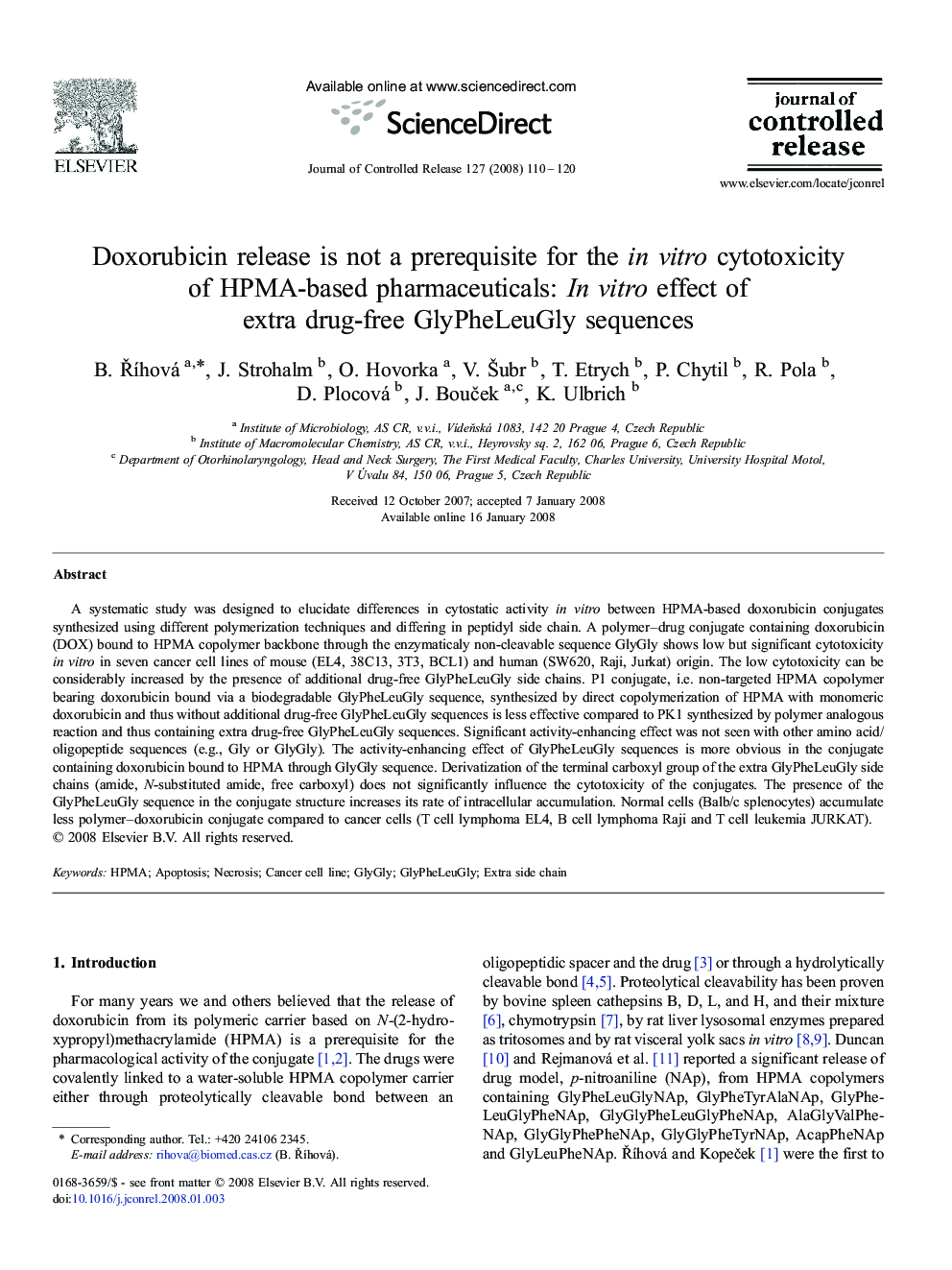| Article ID | Journal | Published Year | Pages | File Type |
|---|---|---|---|---|
| 1427024 | Journal of Controlled Release | 2008 | 11 Pages |
A systematic study was designed to elucidate differences in cytostatic activity in vitro between HPMA-based doxorubicin conjugates synthesized using different polymerization techniques and differing in peptidyl side chain. A polymer–drug conjugate containing doxorubicin (DOX) bound to HPMA copolymer backbone through the enzymaticaly non-cleavable sequence GlyGly shows low but significant cytotoxicity in vitro in seven cancer cell lines of mouse (EL4, 38C13, 3T3, BCL1) and human (SW620, Raji, Jurkat) origin. The low cytotoxicity can be considerably increased by the presence of additional drug-free GlyPheLeuGly side chains. P1 conjugate, i.e. non-targeted HPMA copolymer bearing doxorubicin bound via a biodegradable GlyPheLeuGly sequence, synthesized by direct copolymerization of HPMA with monomeric doxorubicin and thus without additional drug-free GlyPheLeuGly sequences is less effective compared to PK1 synthesized by polymer analogous reaction and thus containing extra drug-free GlyPheLeuGly sequences. Significant activity-enhancing effect was not seen with other amino acid/oligopeptide sequences (e.g., Gly or GlyGly). The activity-enhancing effect of GlyPheLeuGly sequences is more obvious in the conjugate containing doxorubicin bound to HPMA through GlyGly sequence. Derivatization of the terminal carboxyl group of the extra GlyPheLeuGly side chains (amide, N-substituted amide, free carboxyl) does not significantly influence the cytotoxicity of the conjugates. The presence of the GlyPheLeuGly sequence in the conjugate structure increases its rate of intracellular accumulation. Normal cells (Balb/c splenocytes) accumulate less polymer–doxorubicin conjugate compared to cancer cells (T cell lymphoma EL4, B cell lymphoma Raji and T cell leukemia JURKAT).
